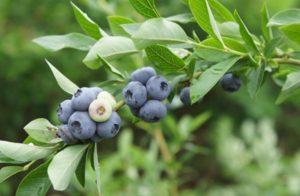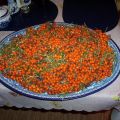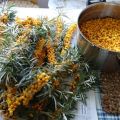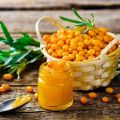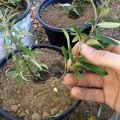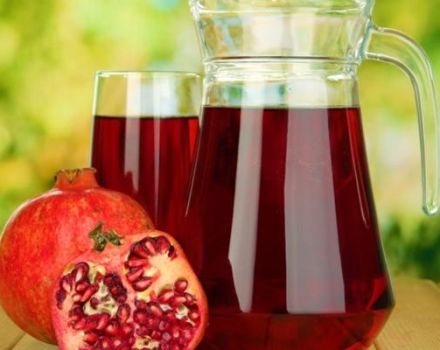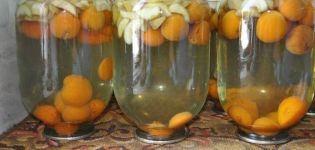Description of the best varieties of sea buckthorn, low-growing and frost-resistant, thornless, juicy and sweet
Gardeners exchange opinions on the best varieties of sea buckthorn. This culture is interesting as a source of vitamin berries and healthy oils. Breeders develop varieties and hybrids for different regions. The characteristics of the plant are constantly being improved. And gardeners can choose the tree that will bear fruit in this area.
Content
- 1 Classification of varieties by maturity
- 2 The best and popular varieties
- 3 Varieties of sea buckthorn without thorns
- 4 Low-growing varieties
- 5 Harvest varieties
- 6 Frost resistant
- 7 Large-fruited
- 8 Sweet and juicy fruiting crops
- 9 The best varieties of male sea buckthorn
- 10 Self-fertile and self-fertilized
- 11 Varieties without overgrowth
- 12 How to choose a sea buckthorn variety for different regions of Russia
But before buying, it is recommended to study the technical data of sea buckthorn and correlate them with the local climate. A competent selection of the species will ensure annual fruiting.
Classification of varieties by maturity
The breeders have divided the sea buckthorn into groups according to the ripening time of the berries. Plants bear fruit from late July to late September.
Early ripe
The varieties and hybrids of this group can be harvested at the end of July. They have a high content of acid and vitamin C. Ripening ends in the first half of August.
Mid-season
These types of shrubs delight with the harvest from late August to early September. These berries have a sweeter flavor.
Late ripening
Late ripening sea buckthorn has a balanced fruit flavor. The amount of sugar and acid is optimal.
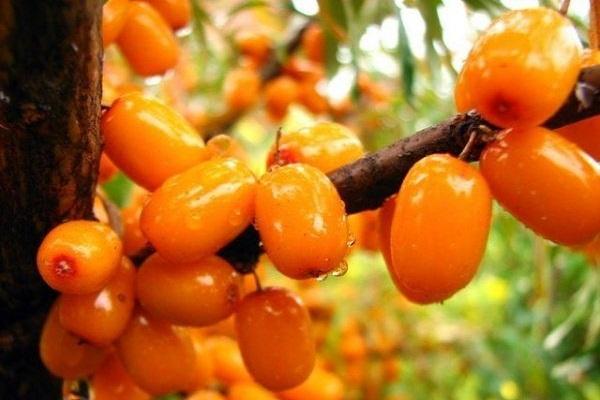
The best and popular varieties
Gardeners who are only choosing the type of sea buckthorn for planting in the garden should study the description of the most common species in their summer cottages.
Perchik
Created at the experimental station of Moscow State University. Technical details:
- the berries are slightly rough;
- fruit color is orange;
- few bones;
- the taste is sweet with sourness;
- the aroma of the pulp has a hint of pineapple.
The maximum yield is 15 kg / tree. The species is included in the State Register and recommended for cultivation in the Central and Northwest regions.
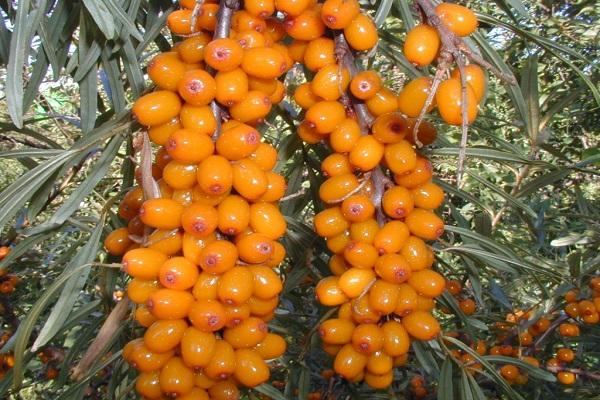
Alei
This is male sea buckthorn. The bushes do not bear fruit, but are excellent pollinators. A distinctive feature of Alei is high winter hardiness of the buds... The plant is listed in the State Register and recommended for pollination of female sea buckthorns in the West Siberian region.
Vitamin
The wild Altai sea buckthorn growing on the banks of the Katun was taken as a basis for the breeding of the variety. Specifications:
- matures early;
- spherical berries;
- the taste of the fruit is sweet and sour;
- high winter hardiness;
- the maximum yield occurs in the 3rd year of fruiting.
Berries are universal. The species is affected by fungal diseases.
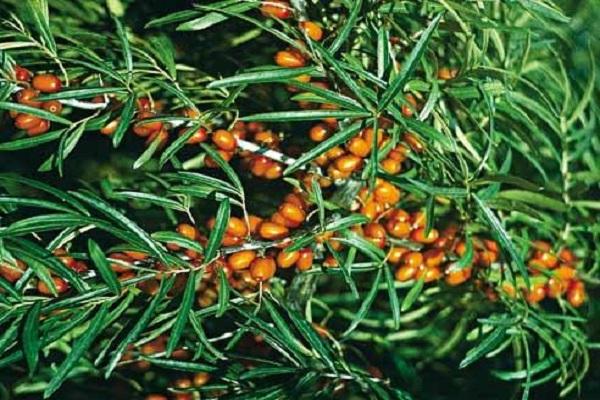
Hikul
An unpretentious variety of male sea buckthorn. Has a high frost resistance of flower buds. Breeders note that when pollinated with Hikul buckthorn buckthorn, the latter increases its yield.
Leucor
This is a very prickly sea buckthorn. The variety is fast-growing: shoots are extended by 50 cm per year. The plant reaches a height of 3 m. Fruits are yellow-orange, sweet and sour. Maximum yield 18 kg / plant. Leukora is a frost-resistant species. Prefers to grow on neutral and alkaline soils.
August
The second name is Augustine. The species bears fruit in late summer. This feature gave it its name. Technical details:
- yield up to 18 kg / bush;
- elongated berries;
- Orange color;
- there are few thorns.
Augustine attracts with its simultaneous drought resistance and frost resistance. Practically does not get sick and is not damaged by pests.
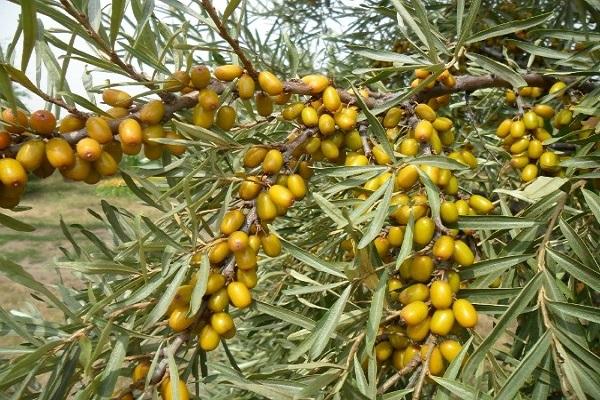
Buckthorn
This is the most common type of sea buckthorn. Distinctive features:
- vigorous plant - up to 4 m in height;
- gives an abundance of root growth;
- fruits reach technical ripeness in the first decade of September;
- the species is resistant to shedding berries;
- sour berries, medium-sized (up to 0.5 g);
- fruit color is yellow-orange.
High frost resistance. The plant does not tolerate acidic heavy soils.
Gnome
Men's sea buckthorn. Gnome is a tall plant (up to 4 m). The culture is frost-resistant, but flower buds are damaged by recurrent frosts.
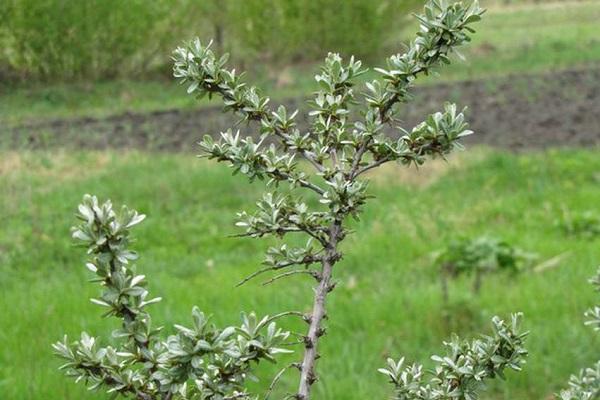
Ulala
The plant habit is moderate. The berries ripen in late autumn. Plant characteristic:
- fruits are bright, juicy, ribbed;
- excellent transportability (due to the dense skin);
- begins to bear fruit in the 5th year after planting in the garden;
- the taste of berries is sweet and sour.
The fruits have a universal purpose. They are used to prepare tinctures, jam or freeze.
Lomonosovskaya
The plant has few thorns, which is very attractive for gardeners. Features of the view:
- yield up to 14 kg / plant;
- berries are bright orange;
- the skin is shiny;
- slightly spreading crown;
- the pulp is juicy, aromatic.
The plant has a high frost resistance.
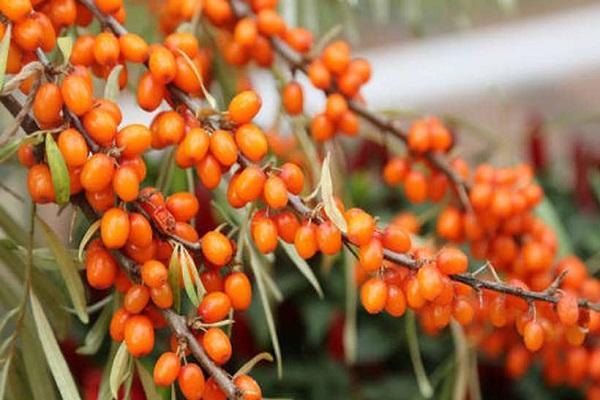
Inya
The parent of the variety is Panteleevskaya sea buckthorn. Variety trials are currently underway in Siberia and the Volgo-Vyatka region. Characteristic:
- yield up to 15 kg / bush;
- the berries are sour, the color is bright;
- the skin is glossy;
- ripens early.
Gardeners are attracted by the moderate plant habit.
Ray
The second name is Radiant. The species was created by Siberian breeders. Variety testing is currently underway in Siberia. Distinctive features:
- fruits taste sour;
- berries are large, orange-red;
- the skin is dense;
- high winter hardiness;
- ripening later.
Due to too juicy pulp, the crop does not tolerate long-term transportation.
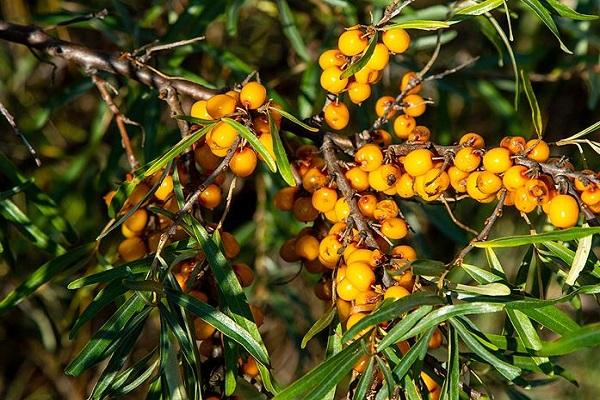
Pineapple
The full name is Moscow Pineapple. Features of the plant:
- a small number of thorns;
- fruits are dark orange;
- the skin is thin;
- the pulp is juicy with a pineapple aroma;
- transportability is low;
- has an average ripening period;
- universal purpose of fruits.
The species is recommended for cultivation in the Northwest.
Digs
The variety was created by Siberian breeders. Features:
- the tops of the branches have thorns;
- high frost resistance;
- great fruit taste.
Ripens early. Rut is recommended for cultivation in Siberia.

Varieties of sea buckthorn without thorns
The presence of thorns seriously complicates the care of the plant.But breeders are constantly working to create new varieties and hybrids. The shipless sea buckthorn with improved characteristics goes on sale. Thornless plants are increasingly found in private gardens.
Giant
Sea buckthorn was created by Siberian breeders. The plant has high frost resistance and drought resistance. Specifications:
- large berries;
- moderate habit (up to 2.5 m in height);
- weak spreading;
- dessert taste;
- the pulp is juicy;
- the skin is thin.
Gardeners are attracted by the universal purpose of the fruit.
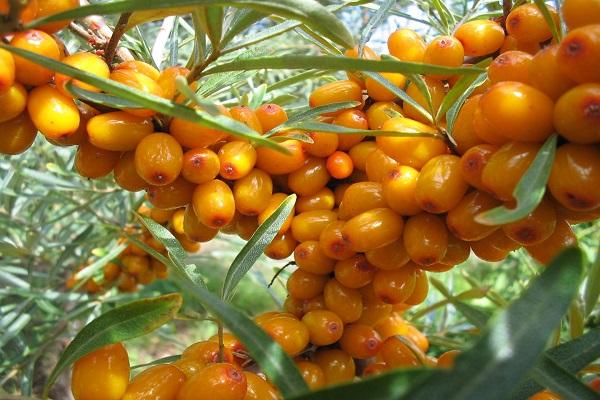
Solar
Parents are Shcherbika-1 and wild sea buckthorn from the banks of the Katun. The variety was created in Siberia. Characteristic:
- fast-growing (the first fruits are obtained after 3 years);
- berries are bright orange;
- the taste is sour.
The fruits have a universal purpose. The variety is characterized by high winter hardiness.
Altai
The advantages of the species are excellent growth and fruiting in all regions. The fruits are bright orange, juicy, sweet. They received the highest taste rating of 5 points. The shrub lends itself well to formation without reducing yield. The berries are easy to transport over long distances.
Friend
Shrub up to 2.5 m high. Berries are bright orange, juicy, sweet and sour. The plant has a high frost resistance. The fruits have a universal purpose. An additional advantage is drought resistance.
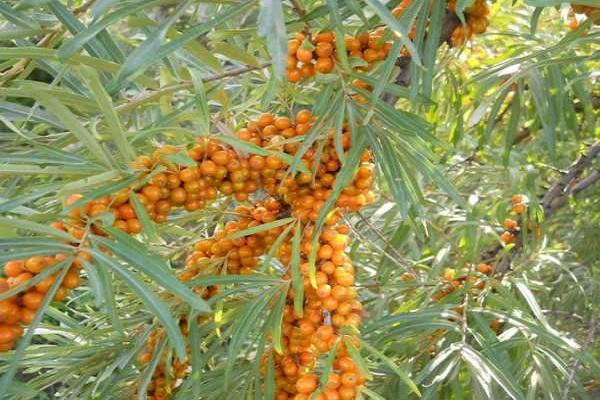
Excellent
The variety is of medium ripening. Characteristic:
- fruits are sweet and sour, have a high taste rating;
- slightly spreading crown;
- high frost resistance;
- drought-resistant plant;
- the color of the berries is pale orange;
- the maximum yield is 15 kg / bush.
The advantage of the species is the ability to grow in all regions.
Chechek
Chechek pleases with fruits at the end of July. The yield is 25 kg / plant. The variety is winter-hardy, undemanding to soils. The fruit has a taste rating of 4 out of 5.

Low-growing varieties
Gardeners are attracted by species of sea buckthorn with a small habitus. Such species take up less space, and in regions with strong winds, the crown is less damaged.
Low shrubs are easy to care for, and harvesting does not turn into an unsolvable task.
Galerit
The fruits ripen at a later date. The berries are bright orange, large. The pulp has a characteristic bitter taste. The yield reaches 10 kg / bush. But gardeners are not satisfied with the thorns on the branches.
Thumbelina
Low-thorn bushes, the height rarely exceeds 1.5 m. Productivity is high: up to 20 kg / bush. The variety is resistant to drought and frost. But the fruits are poorly transported and stored little.
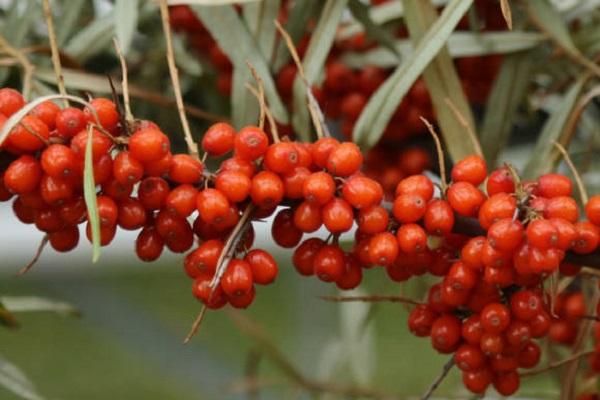
Bayan-Gol
The gardener will receive the first crop 2 years after planting. The height of the bush is 1.2 m. The skin of the fruit is dense, the pulp is juicy, sweet and sour. The transportability of the berries is excellent. The plant is frost and drought resistant. But the yield rarely exceeds 5 kg / bush.
Ryzhik
Heavily studded variety. The berries are bright orange and sour. The yield is high: up to 19 kg / bush. The fruits ripen in medium terms.
Harvest varieties
Gardeners prefer to plant productive species. The presence of 3-4 female sea buckthorns will provide the whole family with valuable raw materials.

Botanical
Sea buckthorn from Altai. Further work was carried out in the Botanical Garden of Moscow State University. Specifications:
- large fruits;
- the skin is bright yellow, shiny, dense;
- the yield increases with the age of the sea buckthorn;
- excellent transportability;
- high frost resistance of the plant.
The fruit received a high taste rating: 4.5 out of 5 points.
Chuiskaya
An excellent product of Siberian breeders. The cultivar is over 40 years old but is still popular. Specifications:
- few thorns;
- yield up to 20 kg / plant;
- the skin is dense;
- the pulp is juicy, aromatic;
- transportability is excellent.
The variety has spread throughout the territory, it takes root well and bears fruit everywhere.
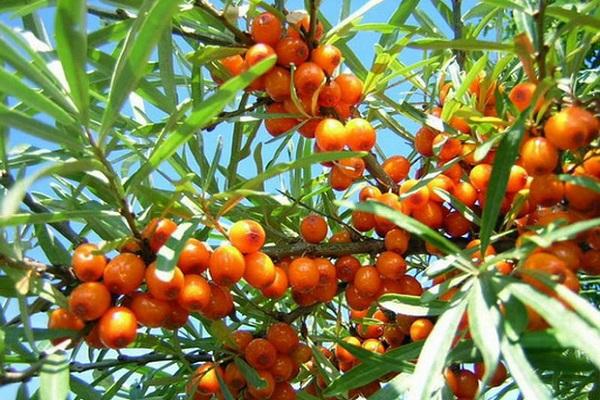
Nivelena
The species pleases with a yield of 10 kg / bush. The plant is characterized by high winter hardiness, disease resistance. Ripens in August.
Frost resistant
Frost resistance is a genetic feature of any sea buckthorn. But there are species in which flower buds are slightly damaged by spring frosts. Therefore, return frosts do not reduce fruiting.
Ear of gold
The bush has a moderate habit. The berries are bright yellow, the pulp is juicy and aromatic. There is no bitterness. The berries are well transported and stored for a long time. Recommended for home gardening and farms.
Trofimovskaya
The crown of the bush is compact, but the plant grows up to 4 m in height. The berries are orange-red, juicy. The pulp is sour, with a pineapple flavor. Productivity up to 8 kg / plant. The advantage of the variety is the small number of thorns.
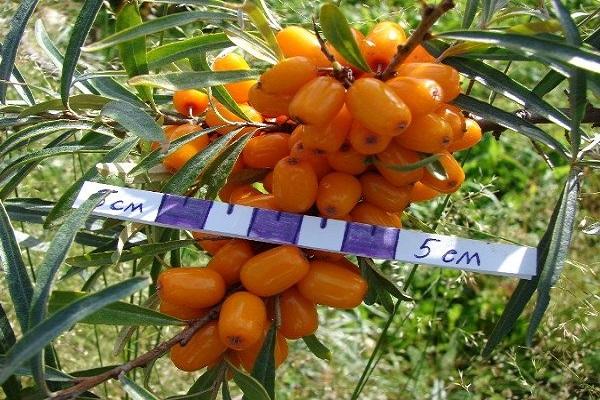
Gift of Katun
The variety has a height of up to 2.5 m. The berry is bright orange, juicy, sour. There are some thorns on the shoots. The fruits are perfectly transported.
Large-fruited
Planting large berries attracts gardeners: it is nice to collect a large sea buckthorn. But it is important to remember that the varieties give a bountiful harvest of a giant berry for 5-7 years, then it becomes shallow, the yield decreases.
Elizabeth
The fruits have a sweet and sour taste and a rich orange color. The berries are ready to eat at the end of September. The plant is winter-hardy, frost-resistant, practically does not get sick. Late ripening is the only drawback of the variety.
Essel
A new variety, created 5 years ago. Distinctive features:
- berries up to 1.5 g;
- excellent sweet and sour taste;
- average ripening period;
- long-term stable fruiting.
Essel requires regular pruning and a well-formed crown.
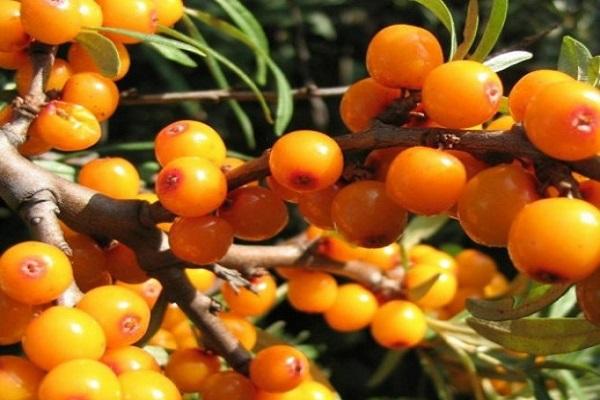
Sun
The second name is Solar. Parents are Shcherbika-1 and wild sea buckthorn from the banks of the Katun. The variety was created in Siberia. Characteristic:
- fast-growing (the first fruits are obtained after 3 years);
- berries are bright orange;
- the taste is sour.
Berries are universal. The variety is characterized by high winter hardiness.
Amber necklace
The parent of the Necklace is a Superior and wild growing seedling. The plant is winter-hardy, drought-resistant. The berries have a pale orange skin. The pulp of the fruit is juicy, sweet and sour. The purpose of the fruit is universal.
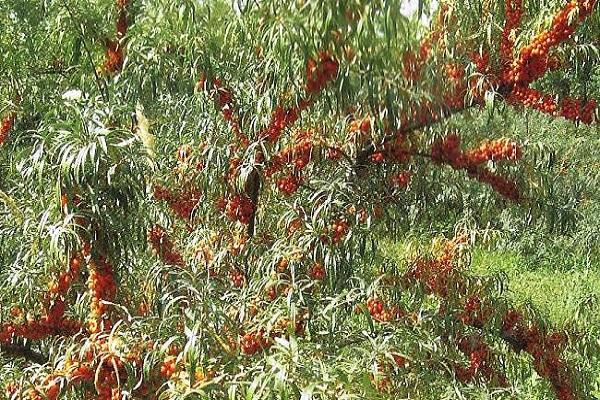
Sweet and juicy fruiting crops
Sea buckthorn growing in the wild has sour berries with pronounced bitterness. But breeders create species in which the amount of sugar is increased. Gardeners are interested in: which variety is the most delicious?
Beloved
The plant was bred by breeders of Siberia. Specifications:
- the bush grows up to 2.5 m;
- prickly shoots;
- overgrowth of the crown is average;
- fruits are yellow;
- the pulp is juicy;
- the skin is dense;
- transportability is excellent.
Berries are universal.
Pearl oily
The variety received a taste rating of 4.7 out of 5 points. Sea buckthorn is drought-resistant, frost-resistant. The advantages of the variety are a compact crown with a height of 2.5 m.
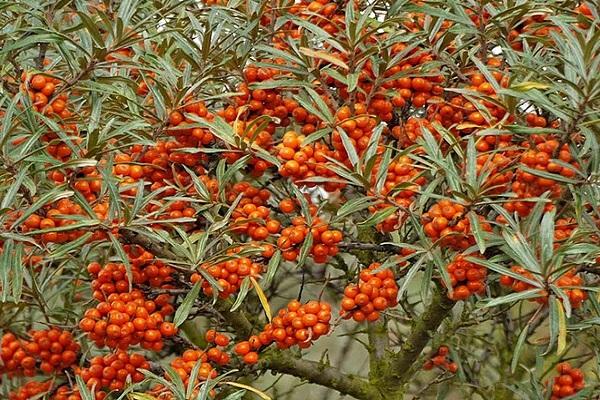
The best varieties of male sea buckthorn
To increase the yield, it is recommended to plant specially bred varieties of male sea buckthorn. These are: Alei, Hikul, Gnome.
Self-fertile and self-fertilized
In nature, sea buckthorn is a self-fertile plant. For fruit setting, male and female plants are required.
Today breeders treat seeds with mutagens and produce plants with altered characteristics. But there is no confirmed data that self-fertile or self-pollinated sea buckthorn appeared.
You can get conditionally self-pollinated sea buckthorn by grafting several male shoots into the crown of a female plant.
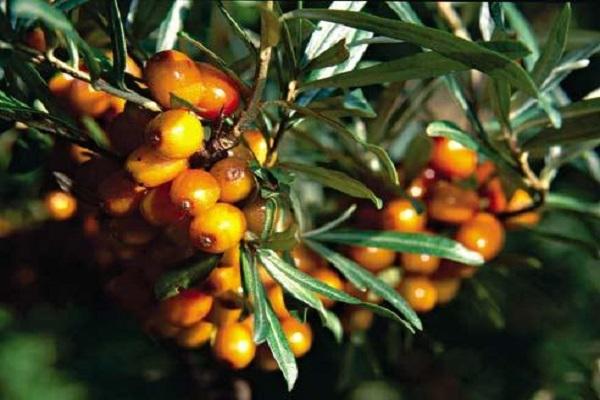
Varieties without overgrowth
Breeders have developed varieties that give a small amount of growth. Sometimes root shoots are completely absent.
How to choose a sea buckthorn variety for different regions of Russia
Before buying a seedling, it is recommended to study which species are suitable for cultivation in a given region of the country.
For the Moscow region
The climate of the Moscow region differs from the climate of the northwest. The region has warm summers and moderately cold winters. You should choose types of sea buckthorn with moderate winter hardiness.
Moscow beauty
The fruits are sour, their purpose is universal, the skin is dense. The berries are orange with red spots. The bush grows up to 3 m.
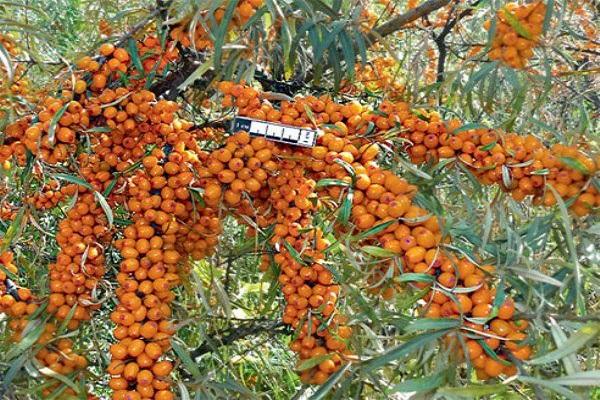
Gift to the garden
The peculiarity of the variety is that thorns are found only on the tops of the branches. The fruits are bright yellow, juicy. The pulp is sour. The tree grows up to 3 m.
Muscovite
The bush is up to 2.5 m high. It has dark orange fruits of sweet taste. The skin is dense, excellent transportability. Gardeners like the variety's resistance to disease and pests.
For the Urals and Siberia
In these regions, winters are long and cold, while summers are short and hot. When buying varietal sea buckthorn, it is recommended to pay attention to frost resistance and winter hardiness.
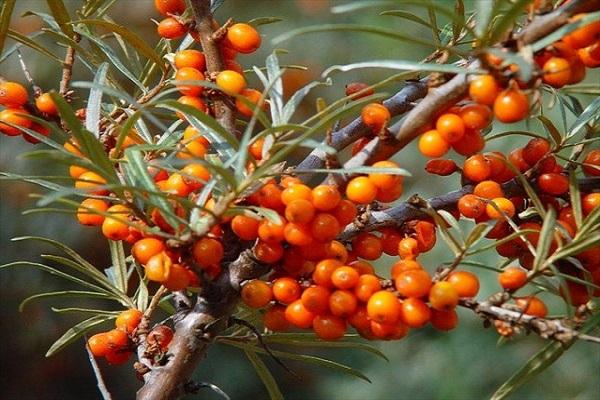
Openwork
Highly winter-resistant variety. Prefers sunny landing sites. The berries are sweet and sour, the pulp is juicy. The plant has a compact crown.
Jam
Late ripening variety. The fruits have a universal purpose, the taste of the berries is sweet, the pulp is juicy. Productivity increases with the age of the shrub.
Lady fingers
The berries are large, elongated. The color is bright orange. A variety of late ripening, the purpose of the fruit is universal.
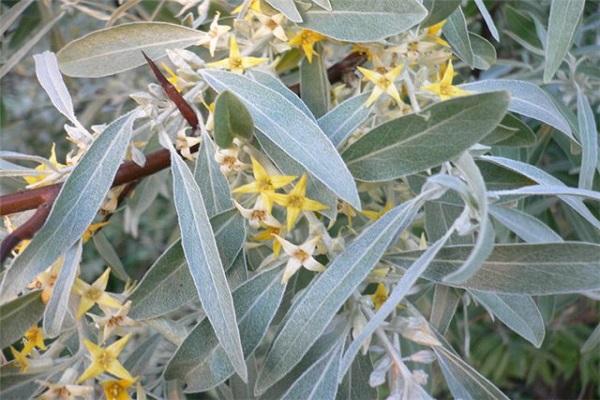
For the middle lane
In the central part of the middle lane, you can plant varieties zoned for the Moscow region. In the north of the region - species bred for the Urals and Siberia.

